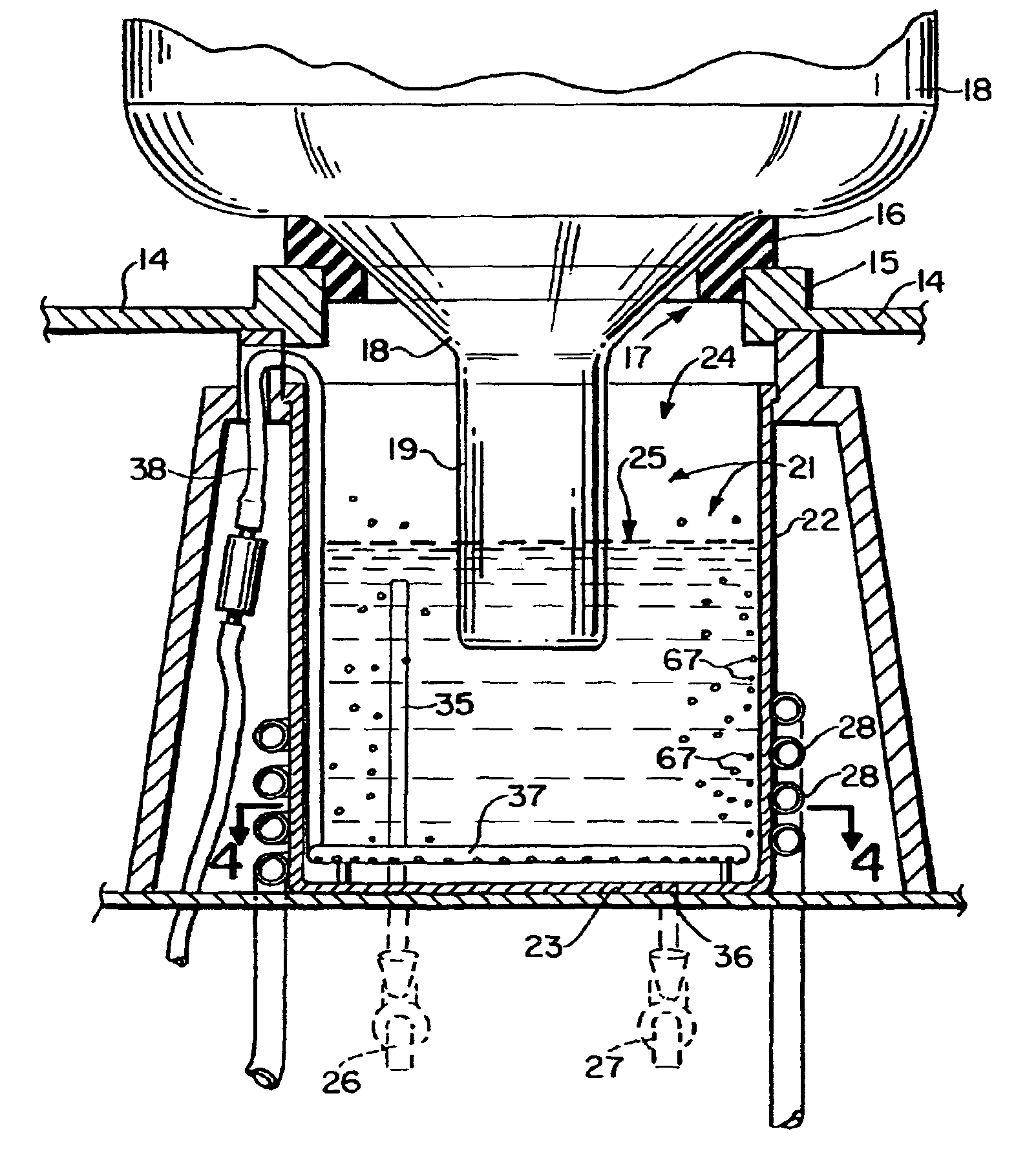Method and apparatus for disinfecting a refrigerated water cooler reservoir
a technology of refrigerated water cooler and reservoir, which is applied in the direction of domestic cooling apparatus, multi-stage water/sewage treatment, defrosting, etc., can solve the problems of difficult to convince everyone who handles these bottles to wash their hands frequently enough, difficult to clean the reservoir in such a water dispenser, and time-consuming project for cleaning the reservoir, etc., to achieve the effect of improving the response rate, reducing the air density and increasing the flow ra
- Summary
- Abstract
- Description
- Claims
- Application Information
AI Technical Summary
Benefits of technology
Problems solved by technology
Method used
Image
Examples
Embodiment Construction
[0145]FIGS. 1-3 show generally the preferred embodiment of the apparatus of the present invention designated by the numeral 10 in FIG. 1. Water dispenser 10 provides an improved apparatus that sanitizes the open reservoir from time to time with ozone. The apparatus 10 includes a cabinet 11 having a lower end portion 12 and an upper end portion 13. The upper end portion 13 carries a cover 14 having an opening 17.
[0146]The opening 17 provides an annular flange 15 and a gasket 16 that defines an interface with bottle 18. The bottle 18 is a commercially available bottle that is typically of a several gallon volume (e.g. five gallons) in the United States. The bottle 18 provides a constricted bottled neck 19 that is placed inside an open reservoir 20 as shown in FIGS. 1 and 3 during use. The bottle neck 19 has an opening for communicating with a reservoir 20 at the interior of the cabinet 11 that holds the water product to be dispensed and consumed. When the reservoir 20 is lowered durin...
PUM
| Property | Measurement | Unit |
|---|---|---|
| distance | aaaaa | aaaaa |
| distance | aaaaa | aaaaa |
| sizes | aaaaa | aaaaa |
Abstract
Description
Claims
Application Information
 Login to View More
Login to View More - R&D
- Intellectual Property
- Life Sciences
- Materials
- Tech Scout
- Unparalleled Data Quality
- Higher Quality Content
- 60% Fewer Hallucinations
Browse by: Latest US Patents, China's latest patents, Technical Efficacy Thesaurus, Application Domain, Technology Topic, Popular Technical Reports.
© 2025 PatSnap. All rights reserved.Legal|Privacy policy|Modern Slavery Act Transparency Statement|Sitemap|About US| Contact US: help@patsnap.com



